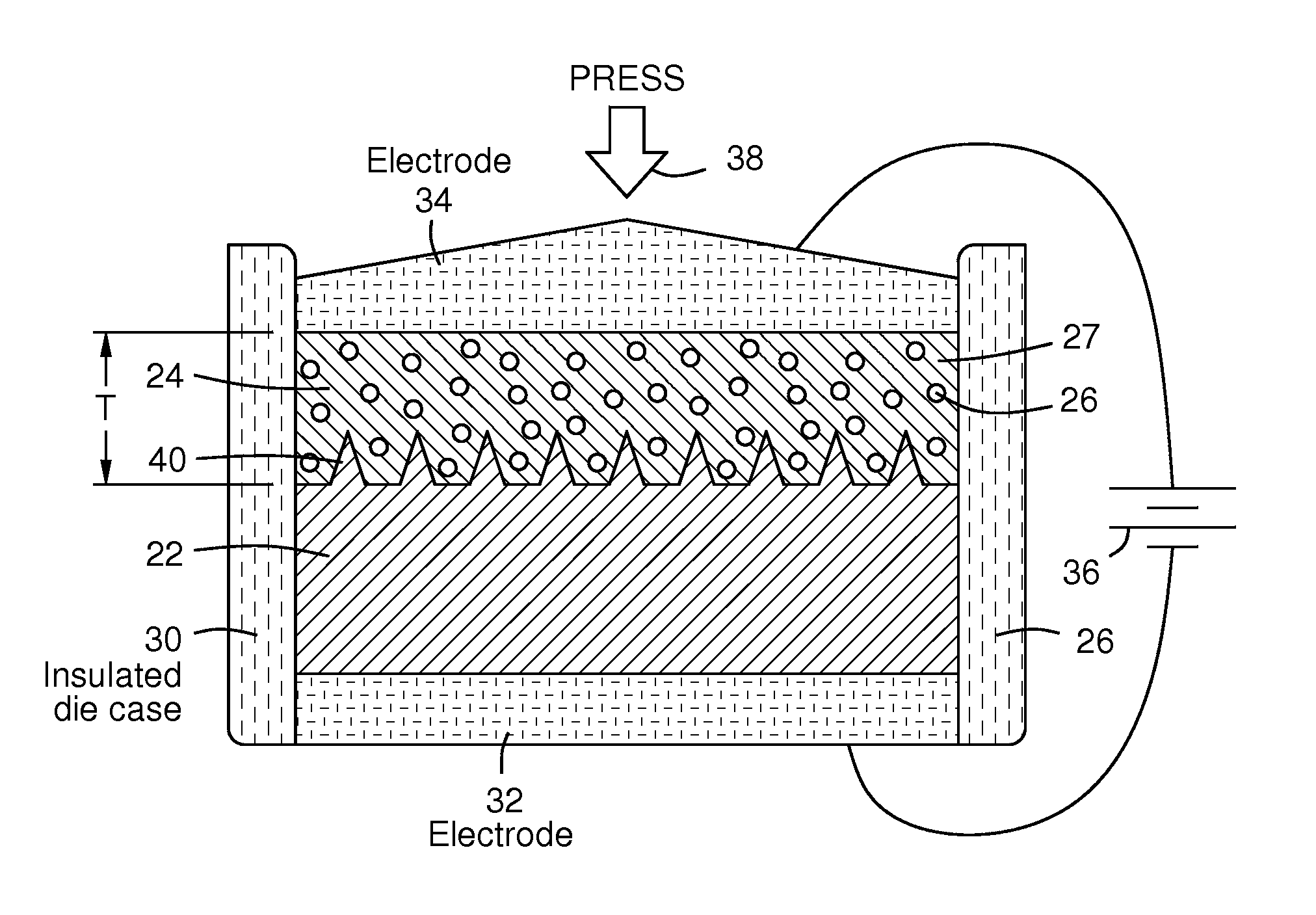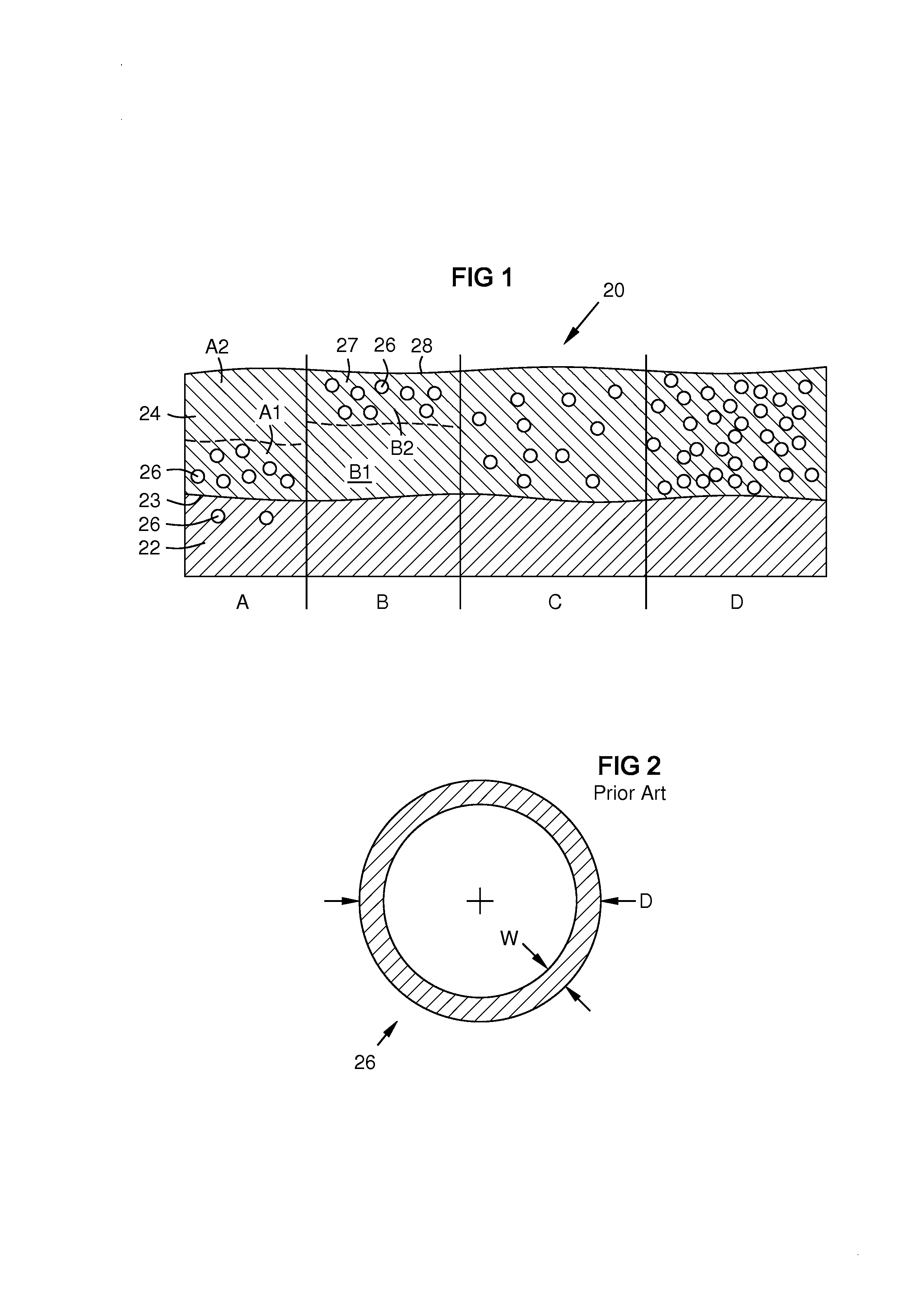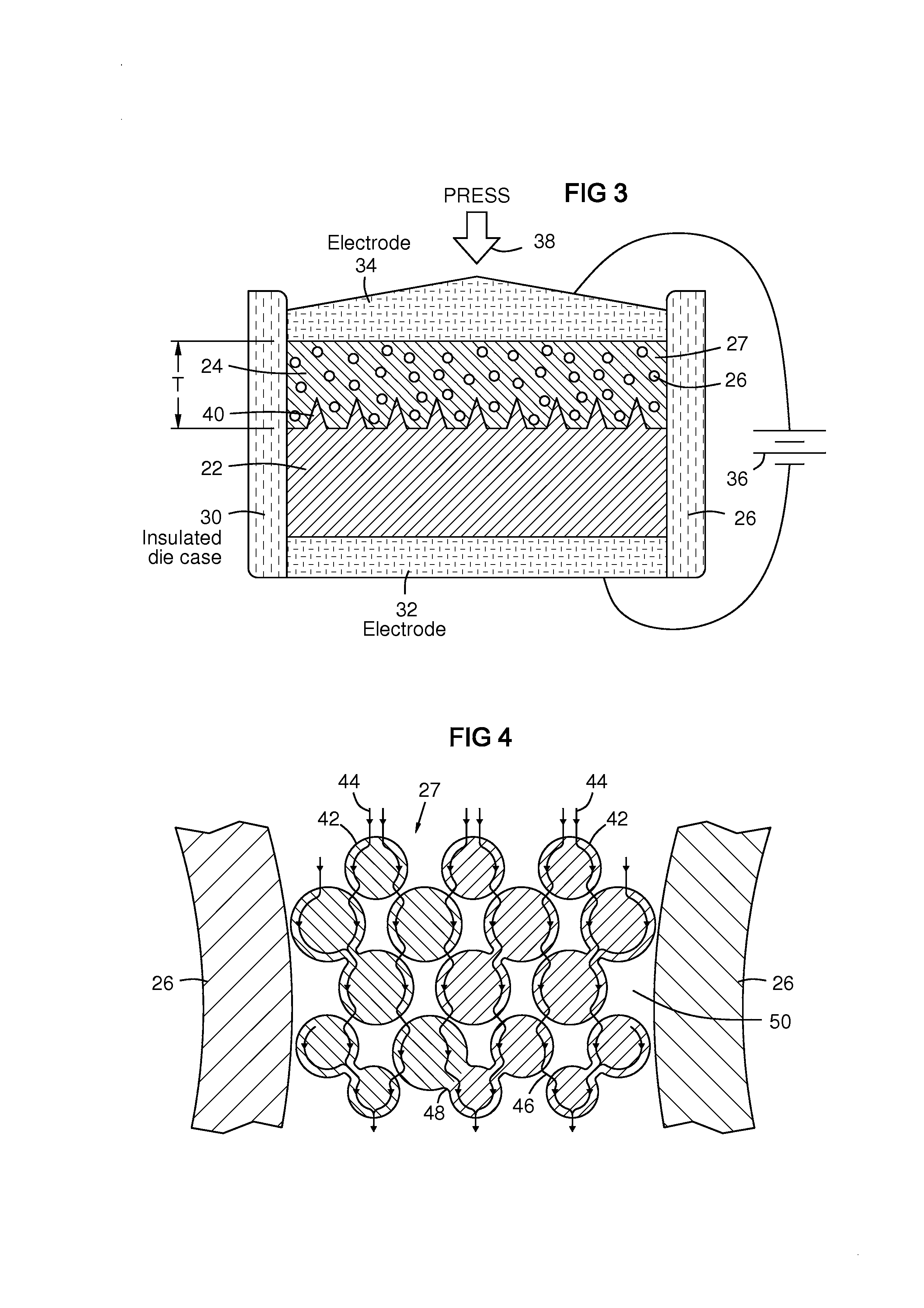Powder-based material system with stable porosity
a material system and porosity technology, applied in the field of material systems, can solve the problems of reducing affecting the durability of tbc and metal substrate, and limited thickness of ceramic tb
- Summary
- Abstract
- Description
- Claims
- Application Information
AI Technical Summary
Benefits of technology
Problems solved by technology
Method used
Image
Examples
Embodiment Construction
[0014]The present invention provides a sintered powder structure that is stable during high temperature operation (i.e. it behaves like a fully dense material not subject to further sintering), yet it contains a known and stable amount of porosity. The inventors have recognized that if a powder-based material system could be formed with stable hollow shapes such as hollow ceramic spheres having fully dense walls in a fully dense ceramic matrix, the material system would provide a specific intrinsic volume fraction of voids, and would not further sinter. This would prevent a further change of porosity or a change in system properties during subsequent high temperature operational conditions. Such a material system with temperature-stable porosity enables an abradable coating that can be used in otherwise non-reachable temperature regimes, for example enabling an abradable ceramic material that can be used at operating temperatures up to 1500° C. in one embodiment. Such a material sys...
PUM
| Property | Measurement | Unit |
|---|---|---|
| diameter | aaaaa | aaaaa |
| aspect ratio | aaaaa | aaaaa |
| shrinkage | aaaaa | aaaaa |
Abstract
Description
Claims
Application Information
 Login to View More
Login to View More - R&D
- Intellectual Property
- Life Sciences
- Materials
- Tech Scout
- Unparalleled Data Quality
- Higher Quality Content
- 60% Fewer Hallucinations
Browse by: Latest US Patents, China's latest patents, Technical Efficacy Thesaurus, Application Domain, Technology Topic, Popular Technical Reports.
© 2025 PatSnap. All rights reserved.Legal|Privacy policy|Modern Slavery Act Transparency Statement|Sitemap|About US| Contact US: help@patsnap.com



